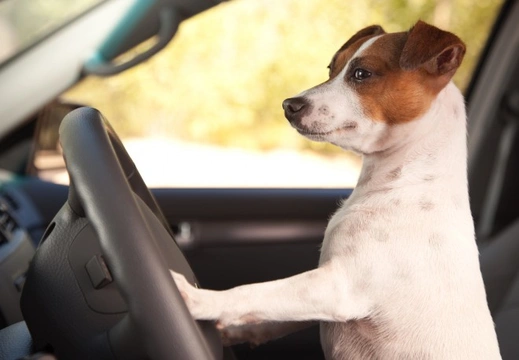
Ten ways to reduce motion sickness in the dog without medications
A large proportion of dogs love going out in the car, as this often means that they will get to go somewhere new and interesting, meet new people and dogs, or be included in things that they might otherwise miss out on. For some dogs, the journey itself is a strong reward, particularly if your dog is able to look around and have access to an open window to take in all of the intriguing smells that will bombard them as you move thorough different areas.
However, motion sickness can affect dogs just as it can with people, and this can make car journeys with your dog fraught with tension, and uncomfortable for your dog too. In this article, we will look at ten things you can do to reduce your dog’s motion sickness, and make car travel more pleasant for all of you. Read on to learn more.
Get them used to car travel
Dogs that are not used to going out in the car are the most likely to find the whole thing unnerving, and the physical movement of the car or the stress that it can involve can all lead to your dog bringing up their lunch or getting a bit green around the gills. Get your dog used to car travel with regular, short journeys; keeping car travel to only emergencies or times when you have no other option is not ideal.
Face them forwards and able to see out
People who are apt to suffer from motion sickness generally find that they are much more comfortable if they are able to face the direction of travel, and see out of a window. The same is true for your dog, so seat them facing the front, and in line of sight with a forward facing window.
Provide distractions
If all your dog has to think about is the fact that they feel a bit seasick, this is likely to ultimately lead to an accident! Bring a toy or puzzle for your dog when they are traveling that they come to see as a desirable reward, to divert their attention from the potential stress of the journey.
Keep the car cool
A hot, clammy car is likely to make your dog feel worse, so ensure that the car is kept cool and well ventilated. On hot days, get the car going and the air conditioning running before your dog gets into it, so that the ambient temperature is comfortable for your dog before you set off.
Let them get some fresh air
Keeping cool in the car is important, but so too is fresh air. Allowing your dog to stick their head out of the window can of course be dangerous, but cracking open a window near to your dog and letting them get their nose into the gap will make your dog feel much better, and also provide stimulus to keep your dog happy and engaged on things other than their rolling tummy!
Drive smoothly
Bad driving can be stressful and upsetting for people, and the same is true for your dog! Drive sensibly and smoothly, corner gently, and avoid sudden braking. This will make your dog more comfortable, less stressed, and easier to settle down for the journey.
Don’t feed before a trip
It should be obvious, but if your dog is likely to get nauseous on your journey, do not feed them right before your trip! A full tummy will make your dog feel worse, and so leave at least a couple of hours between mealtimes and going out in the car in order to avoid accidents.
Keep your dog secure
If your dog gets flung around the car or otherwise feels unstable and insecure, this will make motion sickness worse. Invest in a good quality car harness for your dog, and use this on every journey to keep them safe, and also make them feel more secure and comfortable.
Be reassuring
It is easy to reinforce irrational fears in the dog by being overly reassuring when your dog is unhappy or stressed, and this can actually serve to convince the dog that the perceived threat they face is genuine, and make problems worse. However, if your dog is not feeling 100%, a kind word, smile or general reassurance from the people that they trust will help them to relax and feel happier.
Stop regularly
Long journeys should be broken up frequently when your dog is in the car, and you should not travel for more than 90 minutes at a maximum without taking a five minute breather to allow your dog to get out, stretch their legs, go to the loo and have some water. Breaking up longer trips into a series of mini-walks and breaks can help to break up motion sickness, and make your dog more comfortable and settled for the trip.



